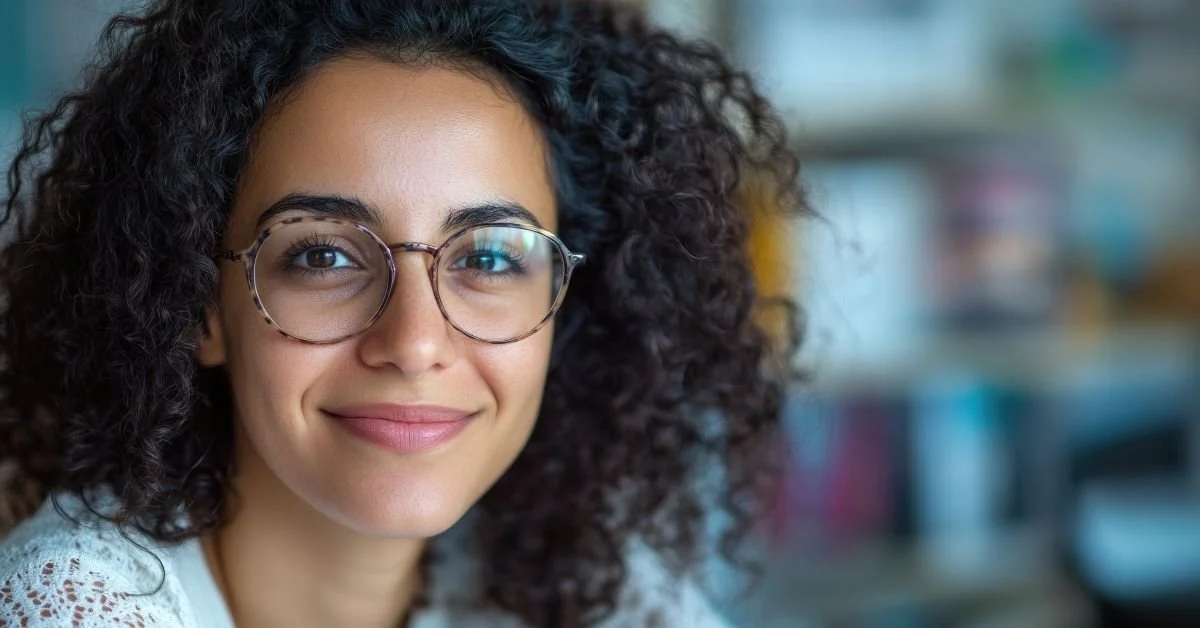New 5-Year Study Shows Stellest Lenses Slow Myopia Progression
At Helio Optometry, we take your child’s vision seriously — and we believe the best care starts with proven solutions. After five years of clinical results, Essilor’s Stellest™ lenses have shown consistent success in slowing down myopia in children. The research is clear, and it's giving families a powerful new way to protect their child's long-term eye health
What Are Stellest Lenses?
Stellest™ lenses are innovative eyeglass lenses specifically designed to slow the progression of myopia — also known as nearsightedness — in children. At first glance, they look just like regular eyeglasses. But built into each lens is a cutting-edge technology called H.A.L.T. (Highly Aspherical Lenslet Target) that works quietly in the background to help manage how the eye grows over time.
The secret lies in the lens design. Stellest lenses feature a constellation of tiny lenslets that create a special optical signal, telling the eye to slow down its elongation — the physical change responsible for worsening nearsightedness. Unlike traditional single-vision lenses, which only correct blurry distance vision without addressing the underlying problem, Stellest lenses actively work to protect your child’s future eyesight.
What’s even better: kids find Stellest lenses easy to adapt to, they wear them just like normal glasses, and they don’t require any extra maintenance. It’s a simple but powerful way to give children a better chance at clear, healthy vision as they grow.
The 5-Year Study: Key Findings
A recent 5-year study has shown promising results for children wearing Stellest lenses:
Slower Myopia Progression: Children wearing Stellest lenses had 58% less myopia progression compared to those wearing regular single-vision lenses. Mean myopia progression over 5 years was -1.27 D for Stellest lenses, and -3.03 D for standard single-vision lenses, a difference of 1.75 D
Reduced Eye Growth: The eye lengthened 52% less in children using Stellest lenses, which is important because excessive eye growth is linked to higher levels of myopia and eye health problems. Mean axial elongation over 5 years was 0.67 mm for Stellest lenses and 1.40 mm for standard single-vision lenses, a difference of 0.72 mm.
Lower Risk of Severe Myopia: Only 9% of children wearing Stellest lenses developed high myopia (greater than -6.00D), compared to 38% in the group wearing regular lenses.
Why Slowing Myopia Matters
Myopia isn’t just about needing stronger glasses every year — it’s a real, physical change in the eye that can lead to serious, irreversible damage.
Left unchecked, myopia increases the risk of retinal detachments, glaucoma, early cataracts, and even permanent vision loss. This isn’t a scare tactic; it’s the reality backed by decades of research.
The higher the prescription, the higher the risk. Every additional jump in nearsightedness makes the eye more vulnerable.
Slowing myopia early isn’t about vanity — it’s about protecting your child’s long-term eye health.
Every step we take now to control their myopia is a step toward preventing major problems later. At Helio Optometry, we treat it like it matters — because it does.
Are Stellest Lenses Right for Your Child?
Every child’s eyes are different — and so is the way myopia progresses. Stellest lenses are a powerful tool, but they aren’t the only option. At Helio Optometry, we start by understanding your child's unique prescription, eye growth patterns, and lifestyle before making any recommendation.
If Stellest lenses are the right fit, we’ll explain exactly why. If another approach would serve your child better, we’ll walk you through that too. Our goal is simple: to protect your child’s long-term vision with the best science-backed solutions available.
Next Steps For Myopia Treatment
If you're serious about protecting your child's vision, now is the time to act. At Helio Optometry, we offer personalized myopia control consultations to help you understand whether Stellest™ lenses — or another proven treatment — is the right choice. '
The earlier we start, the more we can do to slow down myopia and protect their future eye health. Book an appointment today and take the first step toward giving your child the clearest future possible.
Note: The information above is based on current research and is subject to change as new studies emerge. Always consult with eye care professionals for the most personalized advice.
Disclaimer: The content provided in this blog post by Helio Optometry eye care clinic in West Edmonton is intended solely for informational purposes and does not replace professional medical advice, diagnosis, or treatment by a Licensed Optometrist. No doctor/patient relationship is established through the use of this blog. The information and resources presented are not meant to endorse or recommend any particular medical treatment or guarantee and outcome. Readers must consult with their own healthcare provider regarding their health concerns. Helio Optometry and its optometrists do not assume any liability for the information contained herein nor for any errors or omissions. Use of the blog's content is at the user's own risk, and users are encouraged to make informed decisions about their health care based on consultations with qualified professionals.











